
Watching Joe Montana be led off the field in the final quarter of the 1990 NFC Championship Game – a game his San Francisco 49ers would lose to my New York Giants – is among my first memories of watching American football. Not a game-winning pick 6, not an impossible catch, but Joe Cool, disoriented and human, stumbling away from a game he was winning. A team doctor diagnosed the quarterback with a bruised sternum, a bruised stomach, cracked ribs and a fractured passing hand; he’d sit out the entire 1991 season.
But rewatching the play in 2017 – watching all 288 pounds of Giants lineman Leonard Marshall take the Montana hard to the earth – I’m focused on the crown of Marshall’s helmet hitting the back of Montana’s helmet. I’m watching the mask of Montana’s helmet dive into the ground so hard it resurfaces thick with mud.
I wonder what the doctor didn’t diagnose that day.

All sports involve risk to the body. When we play them we exert our bodies beyond what’s necessary and that’s an inherently risky choice. But the odds of sustaining a catastrophic shoulder injury driving a long par four are infinitesimally small and tolerable. The chances of a career runner pulling a hamstring are high, but still tolerable: No one’s ever died of a pulled hamstring.
We now know that the head hits and concussions suffered playing gridiron football cause devastating brain injuries. We don’t know the odds of those injuries becoming Chronic Traumatic Encephalopathy (CTE), but because collisions are a part of regular gameplay and not the exception to it, the risk of exposure to brain injury is 100%.
The question has progressed beyond ‘How much risk of CTE is tolerable?’ to ‘How much CTE is tolerable?’.
Football is America’s game, deeply. It’s rural and it’s urban. It’s timeworn college rivalries and threadbare jerseys passed down paternal lines. It’s ‘Hail Mary’ and ‘hook-and-ladder’ and ‘flea-flicker’. Football is Budweiser and bonfires. The NFL is Thanksgiving.
But what if it wasn’t: Would we make football all over again? Would fathers pass it on to their sons? As the league eyes UK expansion, these questions are no longer hypothetical.
The flags went up months ago. Oxford Circus was festooned with them. Stars and Stripes and Union Jacks and navy banners announcing that the NFL would be invading Regent Street with the Miami Dolphins cheerleaders, a bandstand and free face-painting.
It’s been ten years since America’s football league began staging games in London – not just exhibition games, but regular season matches. There are consistent murmurs of introducing a London franchise, a credit to the country’s world-class stadiums. The objections to a UK-based team are numerous (the fans, the jetlag, the taxes!), but NFL Commissioner Roger Goodell appears intent on crossing the Atlantic: a European merch shop and a UK-specific NFL site are both up-and running, the UK has its own fantasy football site, and, this year, the league’s diaspora spilled beyond Wembley. The Cleveland Browns played the Minnesota Vikings in a nearly sold-out Twickenham Stadium on the last Sunday in October.
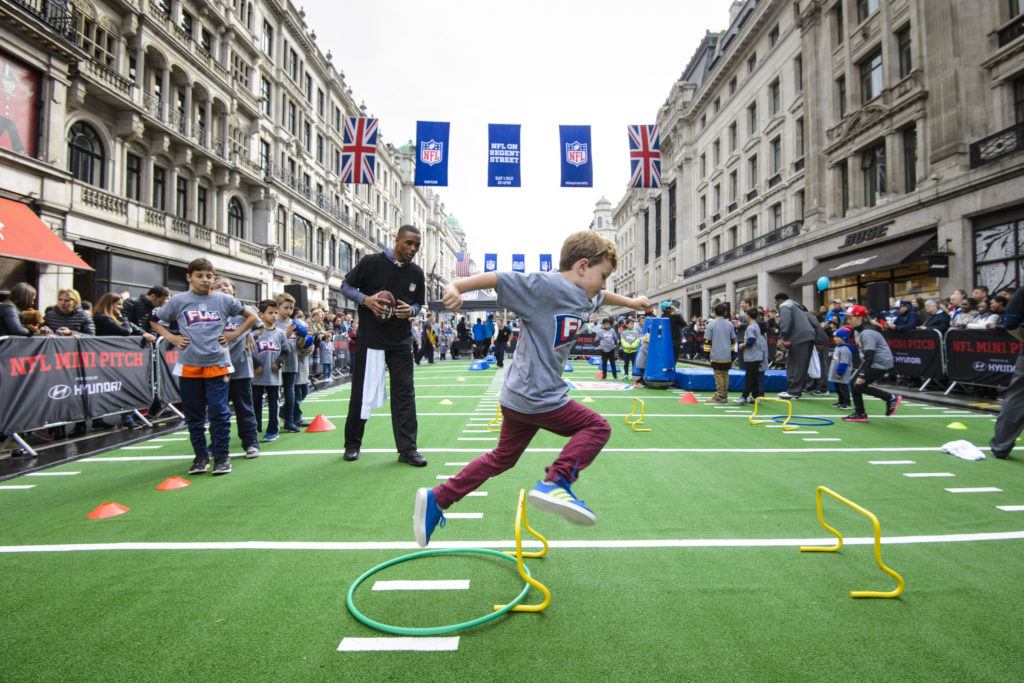
Expansion isn’t easy work, but it’s happening: four games a year on British soil, 3 million UK fans watching from the stands or from their couches with televisions tuned to the BBC. Judith Ineson is the Director of Business Development for Kent-based American Football Development, a three-year-old company teaching people how to play the foreign game. She credits the NFL with raising consciousness about the sport: “People naturally want to try this game they’ve seen on TV.” In the last year, AFD has seen 10,000 children under 18 run through their football programmes, which range from non-contact flag football to full-contact football. They’ve taught kids as young as four.
The British American Football Association – the governing body for gridiron football in the UK – has another three school initiatives in place, including football being added to the £280 million School Games programme managed by the Youth Sports Trust for the first time this year.
BAFA then partners with NFL UK, which runs even more programmes for school-aged kids. Players from the LA Rams have been Skyped into London schools to teach kids about California, about teamwork, and, of course, about how to play gridiron football. This year, Michelle Obama’s Play 60 and the annual Summer Bowl for London schools will be joined by NFL Flag presented by Subway: a 12-week football curriculum for kids ages 9-12, funded by a national appetite for Chicken Tikka footlongs.
Because part of the NFL’s expansion plan is to show Britain that American football is already more British than they realise. The NFL UK’s website is well-stocked with promotional videos highlighting players with sometimes tenuous ties, like the Oakland Raiders’ Obi Melifonwu, who was born in London, but moved to the US at the age of 3. And there’s the Philadelphia Eagles’ Jay Ajayi, who moved to the US at the age of 7.
It’s one reason why David Tossell, the Director of Public Affairs for NFL UK, is so psyched about rugby’s Alex Gray taking up gridiron football, an athlete raised in England and currently playing tight end for the Atlanta Falcons: “It’s great to have people like him who can say, I was a rugby player six months ago and you’ve been playing [American football] since you were young, and look at me, I’m in the NFL now.”
Watching gridiron football is making kids want to get outside and play it – that’s why demand for these school programmes exist. But the street runs both ways; in fact, the NFL’s bottom line is counting on it.
“The more children you can touch, the more fans you can create,” says Tossell. “There’s probably no more effective way of creating fans than getting a ball in their hands.”
In his book The Truth Doesn’t Have a Side, Dr Bennet Omalu – the doctor who discovered CTE – describes a trip he took before the disease was a household acronym:
“During my research into CTE while writing my first paper, I watched high school teams practice. In those practices, young men lined up opposite each other and threw themselves into each other. The loud, clacking sound of plastic helmets hitting each other echoed across the field. Such was not an unusual sound. It is football.”
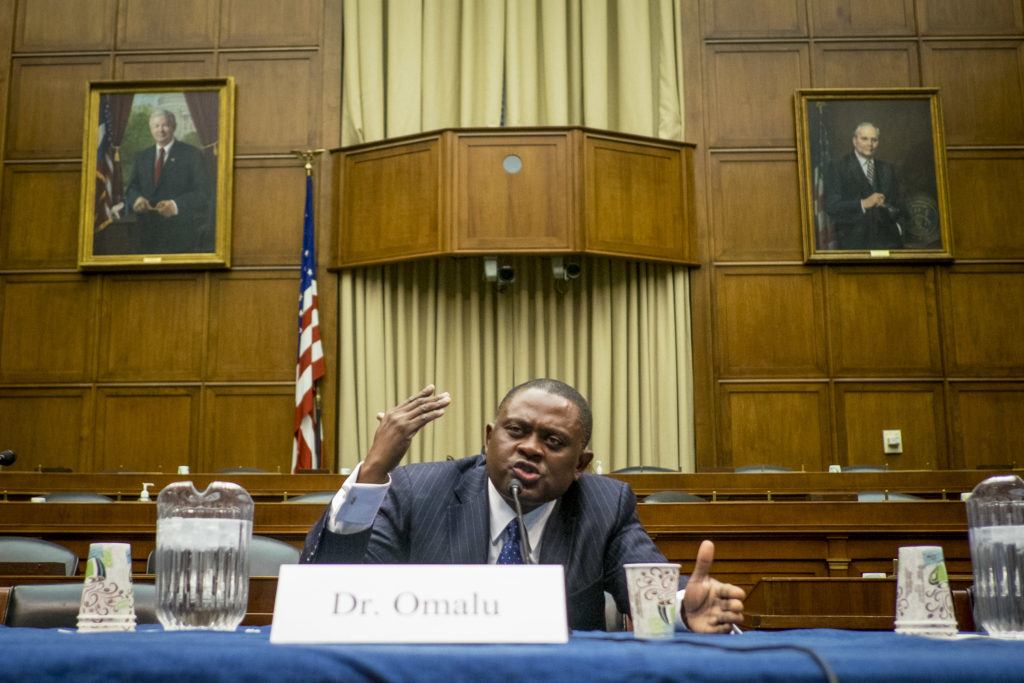
Chronic Traumatic Encephalopathy is a neurodegenerative disease not unlike Alzheimer’s or Parkinson’s. It involves the abnormal accumulation of protein – in this case, Tau protein – in the brain, which leads to selective degeneration. The brain regions affected first are the frontal lobes, which are important for regulating behaviour, inhibiting inappropriate behaviour, and multitasking. There’s no test for diagnosing CTE that can be conducted without dissecting a patient’s brain, so there’s no way to say for sure whether someone suffered from CTE until they’re already dead.
In some sense, a living person can’t have CTE. They can only think they have it, fret about the things they’ve done across their lives that may have caused it.
And the only thing that every person so far diagnosed with CTE has had in common is a history of repetitive hits to the head. Not concussions. Head hits. The loud, clacking sound of plastic helmets hitting each other echoed across the field. That’s the sound of football.
In the years since Dr Omalu’s first book, Play Hard, Die Young: Football Dementia, Depression, and Death, and in large part because of the 2015 film Concussion it inspired, the NFL has been dogged by news stories linking CTE to America’s game.
This past July, for example, the Boston University Brain Bank published a study of 111 former pro-football players whose families believed they’d witnessed the behavioural markers of CTE: memory loss, confusion, impaired judgment, aggression, depression, and, sometimes, suicidal behaviour. Scientists posthumously diagnosed CTE in 110. In other words, 99% of those families were right.
Then in September, the league was sued over the death a former player. Aaron Hernandez played for the New England Patriots for three seasons before he signed a $40 million contract in 2012. Ten months later, he was arrested for murder and, at 25, sentenced to life in prison without parole. In April 2017, Hernandez killed himself in his prison cell. Researchers found he suffered from a severe case of CTE, and his family filed suit – a suit that spokesperson Joe Lockhart announced the NFL would fight “vigorously”.
Just last week another suit was filed, this time a class action against California’s Pop Warner Little Scholars, a youth football league. The named plaintiffs are the mothers of two players who died far from the field, but whose autopsies confirmed CTE. One’s son died in a motorcycle accident at the age of 24, the second died of suicide at 25.
Dr Omalu predicts more litigation will come, then criminal trials. “Playing football is child abuse,” he tells me. “Mark my words, in the next 5 or 10 years, a district attorney will file a lawsuit against the parents of a child who’s been injured playing football. Mark my words.”
But in England, youth gridiron football is just ratcheting up. “We are really pleased to have supported British American Football into the School Games,” said Ali Oliver, the chief executive of the UK’s Youth Sport Trust, by email. He says the sport was added to the curriculum this year, in part, because it was already taking off. And while the School Games iteration of football doesn’t involve contact play, that’s certainly where BAFA hopes it’s headed. Indeed, their national strategy document laying out the plan for the expansion of gridiron football in Britain is called “From School Yard to Super Bowl.” (BAFA declined several requests to be interviewed for this article.)
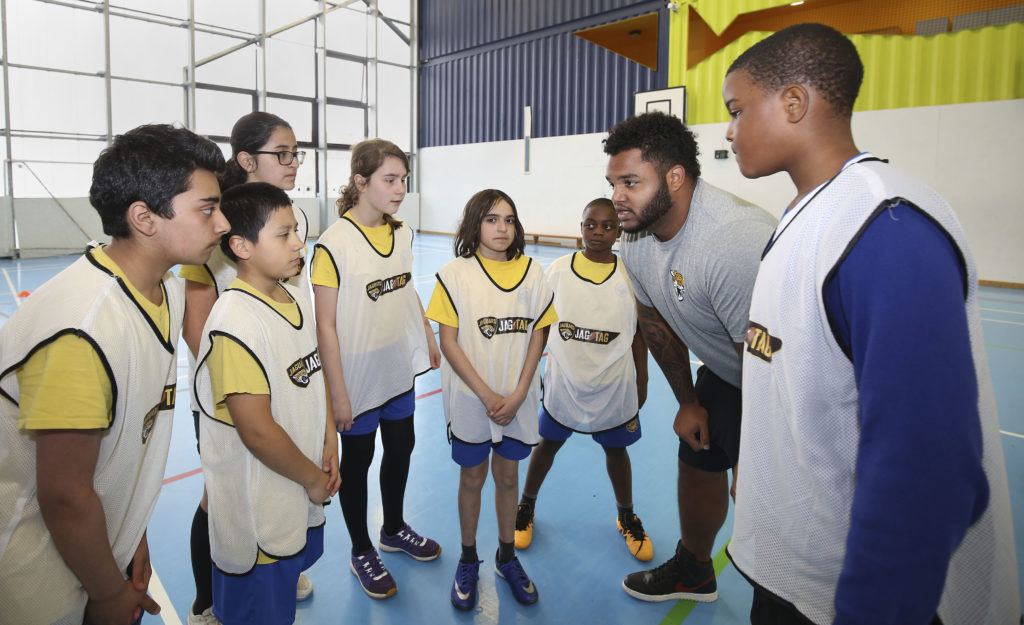
British children are allowed to play full contact football from the age of 14. This is the version of the game they see on TV: with helmets and shoulder pads and hitting. Some people call it tackle football. Judith Ineson, the AFD spokesperson, calls it “padded football.”
According to Tossell, the fastest growing level of play in the UK is university play, which means the fastest growing type of football is tackle football. Since 2013, gridiron football results have been counted towards a university’s BUCS score, another sign the sport is making itself at home.
Accordingly, organizations like BAFA are starting to highlight its risks, if only the bare minimum. This year it introduced a concussion protocol that includes mention of CTE and a pocket-guide on how to spot a concussion, but avoids mention of what newer science is revealing about the sub-concussive head hits a team doctor can’t diagnose.
“It’s not concussions that cause CTE,” says Dr Jesse Mez, the lead author on the Brain Bank study that found CTE in 99% of its subjects. “It’s the repetitive hits. It doesn’t make sense that a symptomatic concussion could lead to this. The important point we’re trying to make is it’s not just concussions.”
A recent Stanford University study found that university players at the position of offensive lineman endure about 62 of these sub-concussive head hits – each of which replicates the trauma of a car collision occurring at 30 mph – in a single game. To give an idea of how many head hits a player can expect to endure in a single year: the UK university-level regular season is eight games long, plus postseason play and practice.
And for British players to be competitive, careers will need to start earlier than university. David Tossell says the league wants to be “working with the players to help them find a pathway into the NFL. Try to identify them from an early age, get them into a US high school or college.”
But US high school starts at 14, and by that time a kid growing up in New York or Florida will have been playing full contact football for nine years. It’s easy to imagine that, as UK play develops, the age British children begin playing full-contact football will lower. The mothers in the class action lawsuit against the youth football league in California – which has yet to be decided – both enrolled their sons in contact football when they were about 8. In San Antonio, parents can sign their kids up for the “tiny-mite” division from the age of 5.
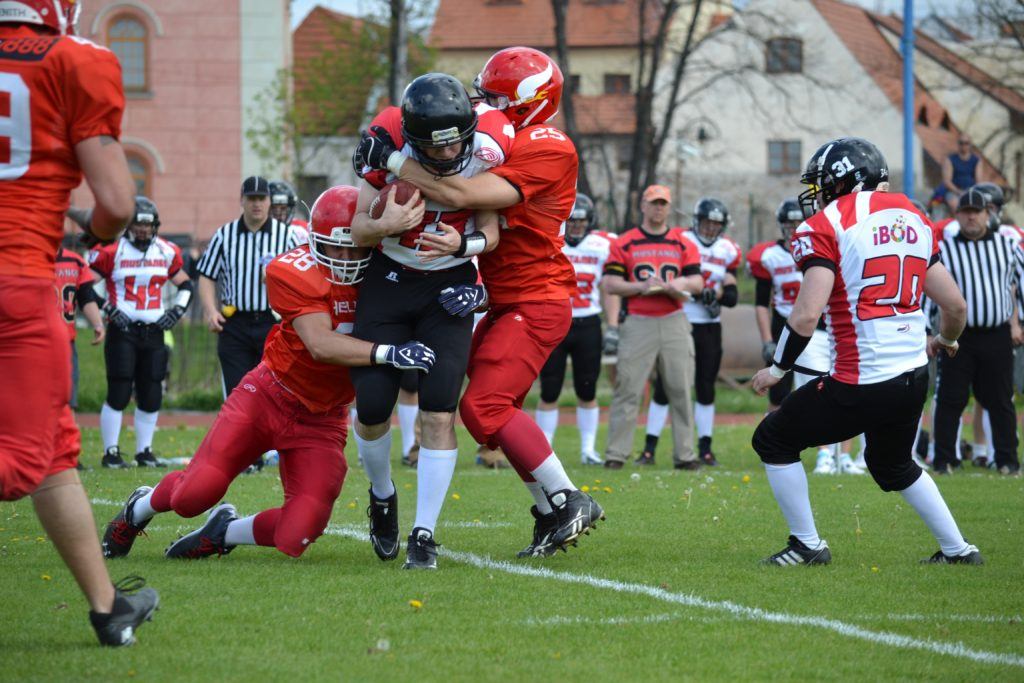
“We don’t know the exact relationship about how much football produces CTE, but we know the connection is really strong,” says Mez. “And when we see those who play earlier, before 12, the cognition is worse: in the imaging studies, the brain structures – the white matter tracts – look more impaired.”
“By the time a child is 15, he’s played for 10 years. There’s a cumulative effect,” says Dr Omalu, evangelical on this point. “There’s been thousands of hits. If you want to do good for your child, don’t let them play football. You wouldn’t give them cigarettes to smoke, you don’t give them a bottle of Johnnie Walker, you don’t give them cocaine.” He pauses.
“But what’s worse: smoking a cigarette or a concussion?”
Gridiron football in the US is a sport that became an industry that created a whole network of related industries and reliance interests. A professional team carries 53 players plus a five player practice squad, about 15 coaches, a back office, not to mention doctors, cheerleaders, stadium staff. They employ outside vendors to drive buses, to do laundry, to provide catering.
Now multiply that by a league of 32 teams. Add college football and high school football and Pop Warner. Add the people who make helmets and the people who design them and the people who study them. Add Nike and Budweiser and Coors and every other company that makes money off the back of football. Over 110 million Americans watched the Super Bowl this year, and the programme sold adverts at a cost of $166,667 per second. It’s not hard to understand why gridiron football persists relatively unchanged, in spite of the known risks to players’ health.
But the pull of the sport is still stronger than money. Gridiron football is scholarships to university, something for kids to focus on after school lets out. It’s lessons in teamwork and losing and dedication. It’s character-building and, as Britain is finding out, it’s fun.
And CTE is by no means linked exclusively to gridiron football. When I asked Judith Ineson about the subject, she pointed to rugby. So did David Tossell: “From a safety point of view, it’s no different than rugby. All sports – rugby and soccer and everyone else – are conscious of safety.”
But it’s not like rugby, in more ways than one. Gridiron football is still finding its feet in the UK. It’s still a sport rather than an industry. It’s an activity rather than a heritage. Ask retired US pros if they would play football again and many, even players anxious that they’re already symptomatic like Redskins wide receiver Santana Moss, say yes. They loved the game enough. Pro Bowler Bo Jackson is one of a growing number who feels differently: “I would have never played football. Never. I wish I had known about all of those head injuries, but no one knew that. And the people that did know that, they wouldn’t tell anybody.”
Leonard Marshall – the player remembered best for that punishing blow he landed on Joe Montana in the 1990 NFC Championship Game – has been even more outspoken. This May, at a press conference for the Concussion Legacy Program, he pledged to donate his brain to science.
“CTE is no joke and I don’t want to see anyone else suffer like me and my friends,” Marshall said at the time. “At 55, I have short-term memory loss, erratic behavior, and experience fogginess. This is literally a life-and-death matter, and it’s time we start having real, honest conversations about brain trauma in professional and youth sports.”
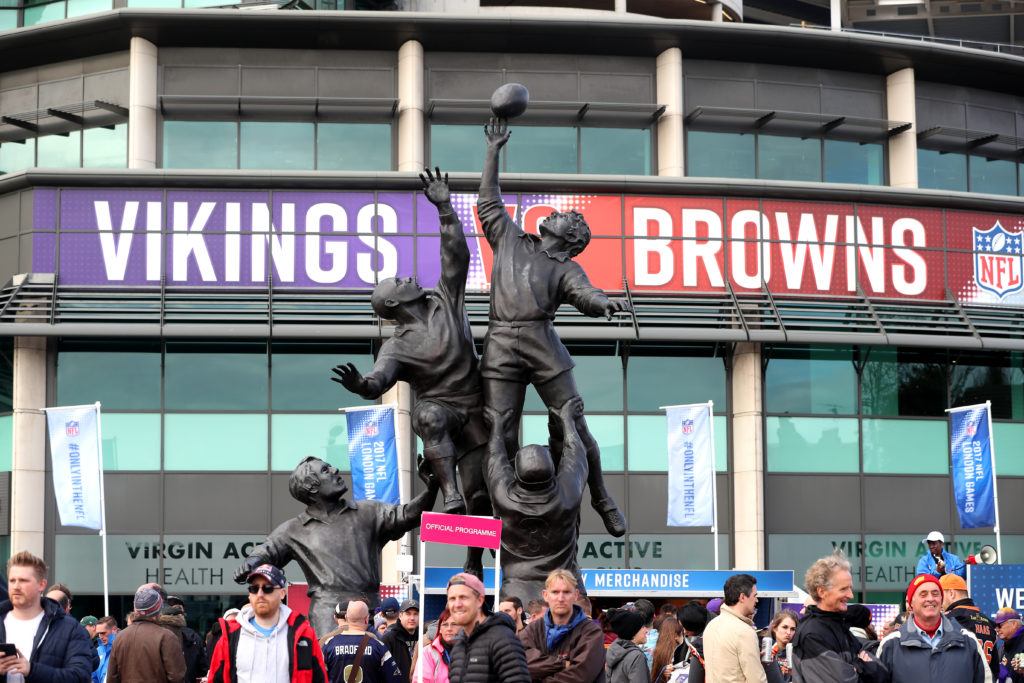
Many suspect that if we knew about CTE, we wouldn’t make football all over again. NFL viewership is in decline in the US; so is participation in youth leagues. More mothers are refusing to drop their kids off at practice, fewer fathers are passing it down to their sons. The loud, clacking sound of plastic helmets hitting each other seems to be growing quieter. But as the domestic audience shrinks, the NFL is expanding elsewhere: inking TV deals with the BBC and, more worryingly, passing through the UK’s school yard gates.
Gridiron football has always marketed itself as America’s game. It’s tradition. It’s ‘Hail Mary’ and ‘hook-and-ladder’ and, now, ‘concussion protocol.’ It’s its own language.
The first test of the NFL’s durability abroad will be whether it can convince a new British audience, one that already knows about the dangers of American football, to learn to speak it.





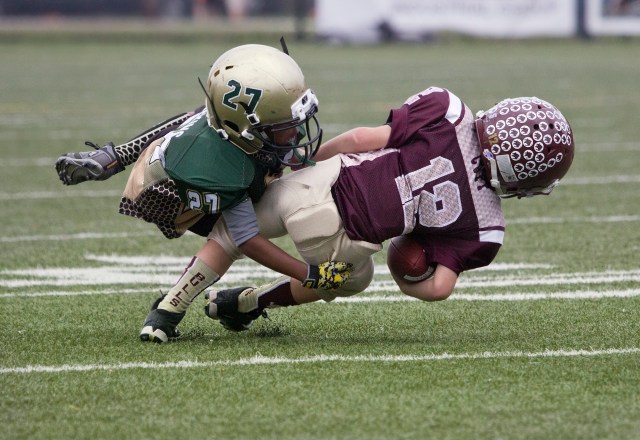




Join the discussion
Join like minded readers that support our journalism by becoming a paid subscriber
To join the discussion in the comments, become a paid subscriber.
Join like minded readers that support our journalism, read unlimited articles and enjoy other subscriber-only benefits.
Subscribe